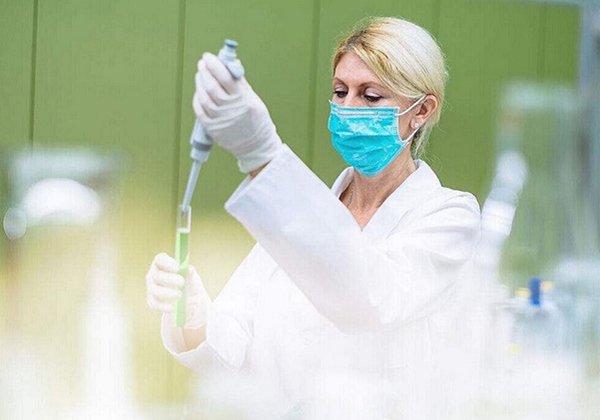Understanding Preimplantation Genetic Diagnosis (PGD) in IVF

胚胎植入前遗传学诊断(PGD)是一种结合体外受精(IVF)的先进技术,旨在胚胎移植前检测其是否存在遗传疾病或染色体异常。通过筛选健康胚胎,PGD显著降低了遗传病的传递风险,提高了IVF成功率,并为高龄女性及有家族遗传病史的夫妇提供了生育健康后代的机会。尽管PGD技术存在一定的局限性和伦理争议,例如胚胎选择的道德问题和高昂的费用,但其在优化妊娠结果方面的潜力不可忽视。本文将深入探讨PGD的工作原理、适用人群、检测范围、风险及替代方案,帮助读者全面了解这一技术及其对现代生殖医学的重要意义。
什么是PGD?
胚胎植入前遗传学诊断(PGD) 是一种与 体外受精(IVF) 结合使用的特殊检测方法。它可以在胚胎被植入母体之前检查其是否存在 遗传疾病 。这项技术最初于上世纪80年代开创,旨在通过检测胚胎的基因或染色体状态,辨别其是否携带可能导致疾病的遗传变异。这帮助医生挑选健康的胚胎,避免将疾病遗传给下一代,同时提高了试管婴儿的成功率。
- 为什么PGD很重要?
- 它能够发现 染色体异常,例如唐氏综合症或其他染色体数目或结构异常。
- 防止遗传性疾病的传递,例如囊性纤维化、镰状细胞贫血等单基因疾病。这些疾病可能对孩子的健康造成严重影响,而PGD可以通过筛选正常胚胎来避免这些问题。
- 为希望拥有健康宝宝的夫妇带来希望,尤其是那些携带遗传病基因或经历过反复流产的家庭。此外,PGD还适用于因年龄相关染色体问题或不孕症而选择IVF治疗的夫妇。
通过PGD,医生能够在胚胎移植前进行精确的遗传分析,从而显著降低遗传疾病的风险,帮助家庭实现生育健康后代的愿望。
PGD是如何工作的?
PGD的过程有几个关键步骤,每一步都至关重要,以确保胚胎的健康和妊娠的成功率:
- 创造胚胎:医生通过 体外受精(IVF) 在实验室中制造胚胎。这一过程涉及将卵子与精子结合,形成多个胚胎,为后续的遗传学检测提供样本。
- 取样:从胚胎中取出一小部分细胞进行检测,这个过程被称为 胚胎活检。通常在胚胎发育到5-6天时进行,此时胚胎已形成囊胚结构,取样对胚胎的损伤较小。
- 检测DNA:科学家提取取样细胞中的 DNA,并使用先进的分子技术对其进行分析,检查是否存在染色体异常或特定的基因突变。这一步是PGD的核心,能够识别可能导致遗传病的缺陷。
- 选择最佳胚胎:只有那些没有 遗传缺陷 的胚胎才会被选中用于移植。这一筛选过程显著提高了胚胎着床和健康妊娠的可能性。
这一过程确保只有 无疾病的胚胎 被植入母体子宫,从而让怀孕更安全,并降低流产或遗传病的风险。
PGD在IVF中的好处
PGD提供了许多优势:
- 降低遗传风险:PGD能够检测胚胎是否携带可能导致遗传疾病的基因突变,从而防止父母将不良基因传给子女。例如,像血友病、地中海贫血症和唐氏综合症等严重遗传疾病都可以通过PGD筛查出来,避免这些疾病影响下一代的健康。
- 提高IVF成功率:通过选择染色体正常且健康的胚胎进行移植,PGD显著提高了体外受精的成功率。研究表明,使用PGD可以减少因胚胎染色体异常导致的流产风险,并增加临床妊娠率。此外,它还能减少多次尝试IVF的需要,为患者节省时间和费用。
- 安心保障:对于有遗传性疾病家族史的夫妇来说,PGD提供了一种科学的方法来确保他们的孩子不会受到相同疾病的困扰。这种技术不仅提升了怀孕的可能性,还让准父母更加安心,因为他们知道自己的宝宝更有可能是健康的。
总之,PGD不仅是提高IVF成功率的关键工具,也是实现健康家庭梦想的重要保障。
谁应该考虑PGD?
并非所有人都需要PGD,但以下人群应特别考虑使用:
- 有家族遗传病史的夫妇:如果家族中已知存在遗传性疾病,例如囊性纤维化、镰状细胞贫血或其他染色体异常,PGD可以帮助筛查出健康的胚胎,从而避免将疾病遗传给下一代。这种技术尤其适用于那些已经通过基因检测确认携带特定基因突变的家庭。
- 携带某些疾病基因突变的人:例如亨廷顿舞蹈症或遗传性乳腺癌(如BRCA1/BRCA2基因突变)等严重疾病的携带者,可以通过PGD筛选出未受影响的胚胎。这种方法为高风险家庭提供了生育健康后代的机会。
- 年龄较大的女性尝试IVF:随着女性年龄增长,卵子质量下降,导致胚胎出现染色体异常的风险显著增加。研究表明,35岁以上的女性在进行IVF时,使用PGD可以有效提高成功率,并降低流产的可能性。因此,对于卵巢功能不佳或年龄超过35岁的女性,PGD是一个值得考虑的选择。
综上所述,PGD特别适合那些希望降低遗传疾病风险、提高IVF成功率的特定人群。
PGD能检测哪些疾病?
| 疾病类型 | 例子 |
|---|---|
| 染色体异常 | 唐氏综合症、染色体易位 |
| 单基因遗传病 | 囊性纤维化、镰状细胞贫血、地中海贫血 |
| 遗传性癌症综合征 | BRCA基因突变(乳腺癌/卵巢癌易感性) |
PGD技术能够筛查出超过400种遗传性疾病,包括常染色体隐性遗传病(如地中海贫血、囊性纤维化)和显性遗传病(如亨廷顿舞蹈症)。此外,PGD还可检测染色体结构异常,例如染色体易位,这可能导致流产或严重的健康问题。对于携带遗传性癌症基因的家庭,PGD可以帮助避免将BRCA1/BRCA2等高风险基因传给下一代。通过这些检测,医生可以选择没有遗传问题的胚胎进行移植,从而显著降低遗传疾病的风险,帮助家庭实现健康生育的目标。
遗传咨询与PGD
在进行PGD之前,夫妻通常会与 遗传咨询师 见面。咨询师会解释以下内容:
- PGD能做什么和不能做什么:PGD主要用于检测已知的遗传疾病或染色体异常,但无法发现所有潜在问题,例如未检测到的基因突变或微小染色体缺失。
- 发现问题的可能性:咨询师会根据家族病史和基因检测结果,评估胚胎携带遗传疾病的风险。
- 如何决定选择哪些胚胎:通过详细分析胚胎的健康状况,帮助夫妇理解哪些胚胎适合移植,从而提高健康妊娠的机会。
这有助于家庭对未来做出明智的选择,同时减少不必要的焦虑和误解。
PGD的风险与局限性
尽管PGD很有帮助,但它并不完美,也存在一些风险:
- 胚胎损伤:在活检过程中,取样可能会对胚胎造成伤害,影响其后续发育。此外,早期胚胎的染色体嵌合现象可能导致误诊,进一步增加风险。
- 错误结果:PGD检测虽然准确性高,但并非100%无误差,可能会出现假阴性或假阳性结果,导致选择错误的胚胎。
- 伦理争议:PGD引发了关于“设计婴儿”的担忧,例如根据性别或其他非医学特征选择胚胎的做法,可能滑向“人种改良学”的深渊。
此外,PGD无法检测出所有可能的 遗传疾病 ,且技术本身的局限性需要医生和患者共同权衡利弊。
PGD的费用
PGD可能非常昂贵,费用包括多个部分:
- 实验室检测费用:根据不同的检测项目和遗传疾病类型,费用差异较大。例如,在香港,PGD的总费用范围约为港币$4,800至$20,000;而在台湾,探针设计制作费为台币90,000,后续检测费用另计。
- 医生看诊费:涉及胚胎活检、基因诊断等专业医疗服务,通常需额外支付。
- IVF周期费用:如果需要多次IVF周期以提高成功率,整体成本会显著增加。
尽管部分保险计划可能覆盖某些费用,但并非所有项目都能报销。因此,建议在选择PGD前详细了解相关费用,并与医疗机构确认具体收费细节。
PGD的成功率
PGD显著提高了拥有健康宝宝的机会,尤其对特定人群效果更为明显。以下是一些关键数据和分析:
- 对于37岁以上的女性,随着年龄增长,胚胎染色体异常的风险增加,而PGD通过筛选健康胚胎,有效提高了活产率。
- 然而,对于较年轻的女性(如35岁以下),由于她们的卵子质量较高,自然受孕或传统IVF的成功率本身较高,因此PGD的额外改善作用可能有限。
- 在性别选择方面,PGD表现出极高的准确性(>99%),满足了部分家庭对性别平衡的需求。
研究表明,经过三次IVF周期并结合PGD技术,成功活产的概率可达到约50%。这表明PGD在优化胚胎选择、提高妊娠成功率方面的潜力,但其效果因个体差异而异。
PGD的伦理问题
使用PGD引发了重大问题:
- 选择胚胎是否正确?
通过PGD选择胚胎可能涉及丢弃含有致病基因或异常的胚胎,这引发了关于生命价值的争议。一些人认为,这种行为可能导致对生命的不尊重,甚至被视为“选择性淘汰”。 - PGD是否会引发“设计婴儿”的趋势?
PGD技术的进步让父母不仅可以避免遗传疾病,还可能选择胚胎的性别或其他非医学特征,例如眼睛颜色或智力水平。这种“设计婴儿”的趋势被认为可能滑向优生学的深渊,进一步加剧社会不平等。 - 谁来决定哪些特征是好或坏?
在PGD过程中,判断哪些遗传特征应该被保留或剔除是一个复杂的伦理难题。这种决定权可能集中在医生、父母或政策制定者手中,但缺乏统一的标准和监管机制。
这些话题在全球范围内仍在讨论中。
PGD的替代方案
如果PGD不适合你,还有其他选择:
- 胚胎植入前遗传筛查(PGS):这是一种用于评估胚胎染色体异常的技术,主要目的是在胚胎植入子宫前筛查出染色体数目或结构异常的胚胎,从而选择健康的胚胎进行移植,提高试管婴儿成功率并降低流产风险。
- 产前检测:在怀孕后通过非侵入性方法(如无创DNA检测)对胎儿进行遗传学检查,评估胎儿患遗传性疾病的风险,帮助父母和医生提前管理妊娠健康。
- 自然受孕:尝试不借助辅助生殖技术怀孕,适合没有明显遗传风险或生育障碍的夫妇。
每个选项都有优缺点,例如PGS费用较高,产前检测可能带来心理压力,而自然受孕无法完全避免遗传风险。建议与医生深入讨论,结合自身情况选择最适合的方案。
Frequently Asked Questions
问:PGD是什么?
答:PGD(胚胎植入前遗传学诊断)是一种用于检测胚胎遗传问题的测试。它通常与体外受精(IVF)结合使用,在胚胎植入母体之前检查其是否存在染色体异常或遗传疾病,从而帮助选择健康的胚胎。
问:哪些人需要考虑PGD?
答:有遗传风险的夫妇应考虑PGD,尤其是那些有家族遗传病史、携带特定基因突变(如囊性纤维化或BRCA突变)的人群。此外,年龄较大的女性(如37岁以上)通过PGD可以显著降低流产风险并提高活产率。
问:PGD可以检测哪些疾病?
答:PGD能够检测染色体异常(如唐氏综合症)和单基因遗传疾病(如镰状细胞贫血、囊性纤维化)。它还可以筛查遗传性癌症综合征,例如由BRCA基因突变引起的乳腺癌或卵巢癌。
问:PGD有哪些风险?
答:是的,PGD存在一定的风险。例如,胚胎活检可能导致胚胎损伤;检测结果可能出现假阴性或假阳性。此外,PGD还涉及伦理争议,例如胚胎选择是否符合道德规范。
问:PGD的费用高吗?
答:PGD的费用因情况而异,但通常较为昂贵。除了实验室检测费用外,还包括医生看诊费及可能的额外IVF周期费用。部分保险可能会覆盖部分费用,但并非所有地区都支持。
问:PGD真的有效吗?
答:是的,PGD在某些情况下非常有效,特别是对于年长的女性。数据显示,PGD可以提高37岁以上女性的活产率,并减少流产风险。然而,对于年轻女性,PGD对临床妊娠率的改善并不显著。
结论:PGD适合你吗?
PGD是使用 体外受精(IVF) 的夫妻的强大工具。它有助于降低 遗传疾病 的风险,并提高拥有健康宝宝的机会。然而,这并不适合所有人。在做决定之前,请仔细权衡成本、风险和伦理问题。
如果你对PGD感兴趣,请咨询 生育专家 或 遗传咨询师。他们可以指导你完成整个过程并回答你的问题。请记住,这是一个个人的决定,目标是建立一个幸福、健康的家。